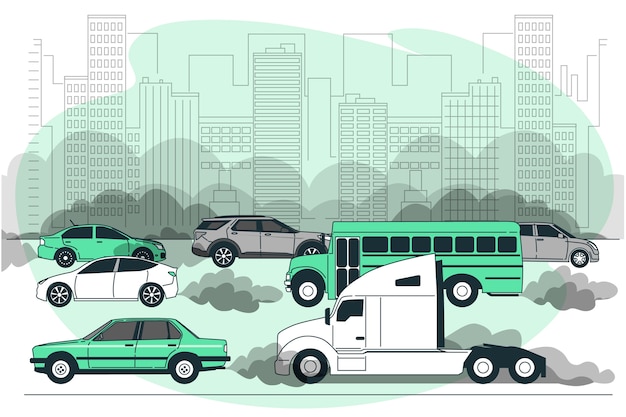Myth 1: "All ELVs End Up in Landfills"
Misconception: It's a common belief that ELVs meet their unfortunate end in landfills, contributing to environmental pollution.
Misconception: It's a common belief that ELVs meet their unfortunate end in landfills, contributing to environmental pollution.
Myth 2: "Recycling ELVs is Inefficient and Costly"
Misconception: Many assume that recycling ELVs is economically burdensome and inefficient.
Truth: ELV recycling isn't just economically viable; it's economically beneficial. It entails recovering valuable materials, thereby reducing manufacturing costs for new vehicles. Additionally, it fosters job creation in the recycling industry, contributing positively to the economy.
Myth 3: "ELV Recycling Doesn't Contribute to Sustainability"
Misconception: Some people think ELV recycling has minimal environmental impact, making it insignificant in sustainability efforts.
Truth: Contrary to this belief, ELV recycling aligns seamlessly with sustainability goals. It plays a pivotal role in conserving valuable resources, reducing waste, and minimizing energy consumption compared to producing new materials.
Myth 4: "Recycling ELVs Doesn't Recover Valuable Materials"
Misconception: There needs to be more awareness that ELV recycling is ineffective in recovering valuable materials.
Truth: ELV recycling is a treasure trove of valuable materials. It involves the recovery of metals, plastics, and other valuable components from ELVs. These reclaimed materials reduce the demand for virgin resources and minimize environmental impact.
Myth 5: "ELV Recycling Isn't Regulated or Monitored"
Misconception: Some believe ELV recycling operates without oversight, leading to irresponsible practices.
Truth: ELV recycling is subject to rigorous regulatory frameworks and monitoring mechanisms. These measures ensure that ELVs are dismantled, recycled, and disposed of responsibly and eco-friendly.
Myth 6: "ELV Recycling Isn't Environmentally Friendly"
Misconception: There's a prevailing misconception that ELV recycling harms the environment.
Truth: Responsible ELV recycling practices significantly reduce environmental harm. Recycling ELVs contributes to a greener and cleaner environment by minimizing waste and pollution.
Myth 7:"Individuals Can't Make a Difference in ELV Recycling"
Misconception: It's a common belief that individual actions have little impact on ELV recycling efforts.
Truth: Every individual can make a difference. Individuals play a crucial role in driving a greener future by choosing responsible ELV disposal methods, such as recycling or selling to certified recyclers and advocating for sustainable practices.
Debunking ELV Recycling Myths: Real-World Examples
To solidify the debunking of these myths, let's examine real-world examples of successful ELV recycling practices:
Sweden's Sustainable Approach
Sweden is an exemplary model in ELV recycling, boasting an impressive recycling rate of over 95%. Their advanced recycling infrastructure efficiently processes ELVs, demonstrating the feasibility of responsible disposal.
Japan's Precise Recycling
Japan is renowned for its meticulous ELV recycling processes. They disassemble vehicles precisely, focusing on recovering valuable metals and contributing significantly to the circular economy.
The European Union's Stringent Regulations
ELVs are not just thrown; instead, they are carefully disassembled, recycled, and disposed of in a way that protects the environment thanks to the strict restrictions the European Union has set for ELV recycling. The international recycling of ELVs should follow these rules as a guide.
MSTI's Innovations in ELV Recycling Technology
MSTI employs cutting-edge dismantling techniques that ensure efficient and safe extraction of valuable materials from ELVs. These techniques reduce the environmental impact of the recycling process.
Automation and Robotics
We integrates automation and robotics into our recycling facilities, enhancing precision and speed in the dismantling and material recovery processes. This not only boosts efficiency but also reduces the need for manual labor, making the process safer and more environmentally friendly.
Data-Driven Recycling
MSTI leverages data analytics to optimize the ELV recycling process. We can make informed decisions that further reduce waste and energy consumption by analyzing data on materials, components, and environmental factors.
Eco-Friendly Energy Sources
MSTI is exploring renewable and eco-friendly energy sources to power its recycling facilities. This step reduces their carbon footprint and sets an example for sustainable industrial practices.
Research and Development
We invests in research and development to improve ELV recycling technology continually. Our commitment to innovation ensures that we stay at the forefront of sustainable recycling practices.
By embracing these technological advancements, MSTI sets new standards for ELV recycling and contributes to a greener and more sustainable automotive industry. Our dedication to innovation reinforces our role as leaders in responsible vehicle disposal.
Conclusion
Finally, ELV recycling myths frequently conceal the clear truth regarding the significance of ethical vehicle disposal. We expose the truth about ELV recycling by busting these myths: it is a financially feasible, environmentally responsible practice that is closely regulated. ELV recycling also greatly advances sustainability objectives by preserving resources, cutting waste, and using less energy. As individuals, we hold the power to make a difference. Choosing responsible ELV disposal methods, raising awareness about the significance of recycling, and advocating for sustainable practices are all steps toward driving a greener revolution in the automotive industry, one ELV at a time. The road to a sustainable future begins with understanding the facts and dispelling the myths that have clouded our perception of ELV recycling for far too long.
